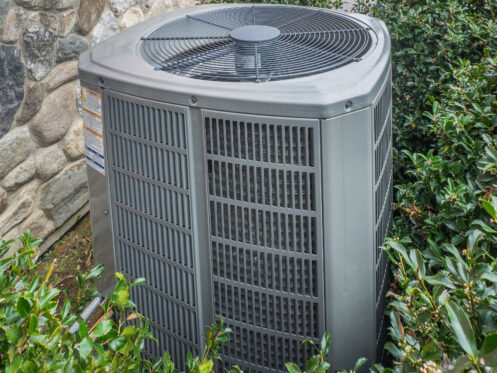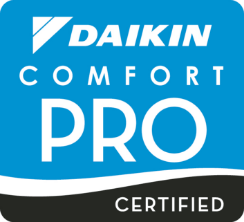When looking for a new HVAC system, you may have considered a heat pump. However, if you’ve never owned a heat pump, you might find it a challenge to sift through all the available information. They are, after all, quite unlike your other HVAC options. Heat pumps offer so many advantages that plenty of people believe they’re too good to be true. The truth is that heat pumps offer one of the most efficient means of heating and cooling your home. All the positive things you’ve heard about them are true. To explain, here’s everything you need to know about how heat pumps work.
What Is a Heat Pump?
To understand how a heat pump works, you need to first understand exactly what a heat pump is. Heat pumps are neither new technology nor are they particularly rare. You might already even have a few heat pumps in your home without even realizing it. For example, the refrigerator currently chilling your veggies and keeping your dairy products cold is a type of heat pump. So is your home’s existing air conditioning unit.
Simply put, a heat pump is a device that moves heat energy from one place to another. In the HVAC industry, however, a heat pump is an HVAC system that cools your home in the summer and warms it in the winter. It does this by transferring the heat much like a conventional air conditioner does. The big difference between the two devices is that a heat pump contains a reversing valve, allowing it to not just cool a space but also heat it.
How Do Heat Pumps Work?
A heat pump uses the refrigeration cycle to move heat from one place to another. It manipulates the pressure and temperature of a refrigerant, allowing it to absorb heat and release it elsewhere. It’s a process that’s easy enough to understand in the summer. A cold refrigerant collects heat from your home’s air and then releases it outside. It’s how heat pumps work in the winter that confuses the average homeowner.
In the winter, a heat pump’s heating cycle begins with a refrigerant, which is in a liquid, low-pressure state. In that condition, the refrigerant will be quite cold, with some heat pumps operating with refrigerants that get as cold as -15 degrees Fahrenheit. The cold refrigerant then passes through a heat exchanger in the heat pump’s outdoor unit. There, a large fan blows outside air across the heat exchanger.
Since the outside air is warmer than the refrigerant even in the winter, the refrigerant will warm up. At low pressure, the refrigerant also has an extremely low boiling point. When it absorbs enough heat energy from the outside air, it boils and turns into a warm, low-pressure vapor. That vapor then travels through a compressor, which increases its pressure. This has the useful side effect of making the refrigerant even hotter. After passing through the compressor at this stage, the refrigerant can be as hot as 130 degrees Fahrenheit.
The high-pressure hot refrigerant next travels inside the house to another heat exchanger. There, another fan circulates indoor air across the heat exchanger, which warms the air up to heat the home. Once the gaseous refrigerant releases enough of its heat, it will condense back into a cool liquid before traveling back outside to the outdoor unit and through an expansion valve, which lowers its pressure and temperature so the cycle can begin again.
The Interesting Science Behind Heat Pumps
At this point, you may be wondering how it’s possible for a heat pump to collect heat from the outside air when it’s extremely cold outside. The answer to that lies in a few important scientific principles that make heat pumps possible. The first is that air always contains heat energy, down to absolute zero or -459.67 degrees Fahrenheit. The second is a part of the second law of thermodynamics.
That law states, in part, that heat will always flow spontaneously from a hotter substance to a colder one. This means that a heat pump can reliably collect heat energy from the outdoor air, just as long as its refrigerant remains colder than the outdoor air. As a result, there are heat pumps on the market today that can still provide you with plentiful heat, even in frigid conditions.
Heat pumps also rely on the relationship between pressure, temperature, and boiling point. In general, the more pressure you put on a liquid or gas, the hotter it gets. When you lower the pressure, the opposite happens. At the same time, pressure alters the boiling point of liquids. At low pressures, you need less heat energy to boil a liquid. At higher pressures, the opposite is true.
The Benefits of Heat Pumps
You can enjoy a variety of benefits from owning a heat pump compared to a conventional HVAC system. The most important among them is energy efficiency. In cooling mode, heat pumps offer some of the highest energy efficiencies of any AC system on the market. The average heat pump has a SEER rating of 22, placing heat pumps in the upper echelon of air conditioning efficiency. In the winter, though, is when heat pumps shine.
In heating mode, a heat pump can reach efficiency levels upwards of 400%, given the right conditions. That’s over four times as energy efficient as the best gas furnace on the market today. Best of all, the climate here in Playa Vista is about as ideal for heat pumps as it gets. Heat pumps heat your home most efficiently when the temperature doesn’t drop well below freezing. This means residents here can expect maximum energy efficiency from their heat pumps in the winter. As a result, homes with heat pumps often see their yearly energy bills drop by up to 40% compared to using a conventional HVAC.
Heat pumps also do an excellent job of controlling humidity in your home, which can enhance your comfort. With our average humidity level of 71% here in Playa Vista, that’s a major advantage. It’s possible because heat pumps work best when they run at low power for extended periods. This gives them more opportunities to extract humidity from the air, making them even more effective at controlling conditions in your home.
Your Local Heat Pump Experts
If you like what you’ve just read about heat pumps and want to upgrade your home to use one, Belle Air Services can help. For over 5 years, we’ve provided expert HVAC installation, repair, and maintenance services to homeowners in and around Playa Vista. That includes working with the latest heat pumps and ductless AC systems, too. We also offer indoor air quality services, should your home need them. We even offer financing options on approved credit if you need help fitting a new heat pump into your budget.
When you’re ready to install a heat pump in your Playa Vista home, contact our team at Belle Air Services today.






